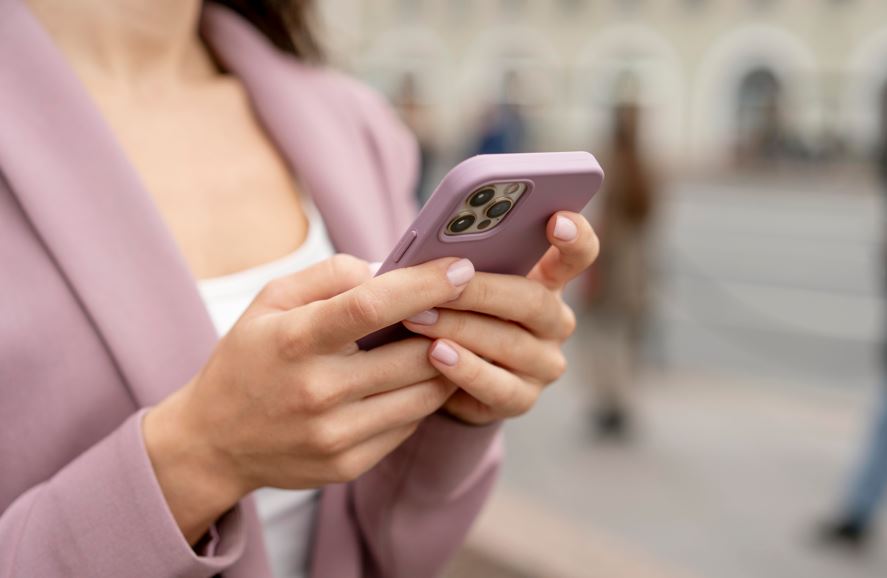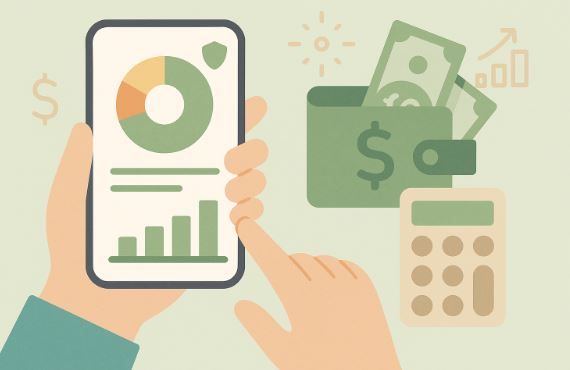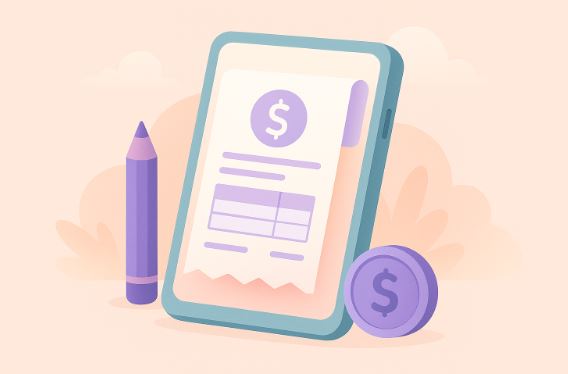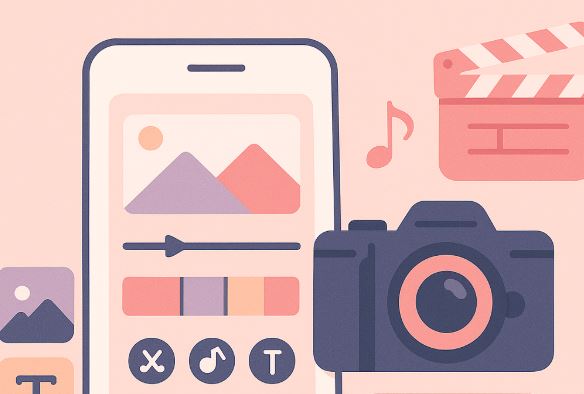iPhone Security - How to Keep Your Device Safe and Secure
8th October 2024
Jeff Patton
In a contemporary environment where smartphones store a wealth of personal information, it is imperative to prioritize the security of our devices.
The spectrum of security threats faced by iPhones encompasses malware, phishing scams, physical theft, and hacking. Nevertheless, there are proactive measures that can be implemented to safeguard your device.
This discussion is centered around prevalent security threats for iPhones, recommendations for enhancing the security of your device, and the appropriate course of action in the event of an iPhone security breach. Let us delve into this subject matter and collectively fortify the security of your device.
Why Is iPhone Security Important?
Ensuring the security of your iPhone is of paramount importance in today's digital landscape to protect your device, personal data, and privacy from cyber threats and unauthorized access. Safeguarding your iPhone's security is vital for safeguarding valuable information and upholding the integrity of your device.
The prevalence of data breaches has escalated, emphasizing the critical need for implementing robust security measures on your iPhone. Insufficient security measures can expose your sensitive information to malicious actors, resulting in identity theft, financial damages, and potential harm to your reputation. By employing strong passcodes, encrypting data, and utilizing security features such as Touch ID or Face ID, you can significantly bolster the security of your device. Proactively enhancing iPhone security is imperative to mitigate potential risks and ensure the confidentiality of your personal data against unauthorized access.
What Are the Common Security Threats for iPhones?
Numerous security threats present significant risks to iPhones, encompassing malware, phishing scams, cyber attacks, and vulnerabilities that have the potential to compromise the security of both the device and the personal data stored within it. It is imperative to have a comprehensive understanding of these threats in order to effectively implement protective measures.
Malware, a form of malicious software, is crafted to gain unauthorized access to your device, often masquerading as legitimate applications. Its infiltration can result in data theft or system impairments. Phishing scams involve fraudulent endeavors to acquire sensitive information such as passwords or credit card details through deceptive emails or websites.
The spectrum of cybersecurity risks extends to unauthorized access to your device and data breaches. These vulnerabilities have the capacity to lead to severe consequences, not only impacting the security of your device but also compromising your privacy.
1. Malware and Viruses
Malware and viruses represent significant security risks for iPhones, jeopardizing sensitive data, device functionality, and overall security. Safeguarding the device from malware is imperative to uphold data integrity and ensure a secure digital environment.
Malware, a form of malicious software created to disrupt, damage, or gain unauthorized access to iPhones, poses a severe threat. In contrast, viruses replicate themselves by attaching to other programs and executing code when those programs are activated.
When an iPhone falls prey to malware or a virus, the consequences can include diminished performance, frequent system crashes, and potential data breaches. Common origins of malware infections encompass phishing emails, malevolent websites, and unverified applications.
To mitigate these risks, it is advisable to consistently update the iPhone operating system, employ reputable antivirus software, and refrain from engaging with suspicious links or downloading applications from untrustworthy sources.
2. Phishing Scams
Phishing scams entail deceptive strategies designed to deceive iPhone users into divulging sensitive information, such as passwords or financial particulars. The ability to discern and evade phishing endeavors is paramount in shielding one's data and privacy.
Scammers frequently utilize ploys like assuming the identities of reputable entities, dispatching urgent notifications, or fabricating counterfeit websites to dupe unwitting iPhone users. Through vigilance and staying abreast of developments, individuals can shield themselves from succumbing to these malevolent machinations.
To identify phishing endeavors, it is imperative to meticulously scrutinize URLs, be on alert for grammatical or spelling errors in emails, and abstain from clicking on dubious links. It is always advisable to verify the authenticity of solicitations for personal information prior to surrendering any sensitive data.
It is imperative to bear in mind that maintaining a wary and well-informed demeanor is pivotal in fortifying iPhone security and fortifying defenses against phishing assaults.
3. Physical Theft
The theft of iPhones poses a significant risk of unauthorized access to personal data, potentially jeopardizing both privacy and security. Therefore, the implementation of anti-theft features and security measures is imperative to safeguard the device in the event of loss or theft.
To mitigate the vulnerabilities associated with physical theft, it is essential to activate key functionalities such as Find My iPhone, Activation Lock, and biometric authentication. These features serve the dual purpose of helping with the location tracking of a stolen device and acting as deterrents against unauthorized access. Enabling remote wipe capabilities is crucial to ensure that sensitive information can be remotely erased should the device fall into the hands of unauthorized individuals. Regularly updating the iOS software and utilizing strong, unique passcodes further enhance the resilience against theft. In the dynamic realm of digital security, maintaining a proactive approach towards device security becomes paramount.
4. Hacking and Data Breaches
Incidents of hacking and data breaches pose a serious threat, potentially resulting in unauthorized access to sensitive data stored on iPhones. This jeopardizes both data privacy and device security. It is imperative to implement robust security measures to mitigate the risk of breaches and safeguard personal information.
One of the primary consequences of iPhone hacking is the exposure of personal photos, messages, financial records, and other confidential data. Cybercriminals exploit vulnerabilities to infiltrate the device and extract sensitive information, consequently facilitating identity theft, financial crimes, and breaches of privacy.
To fortify security defenses, users are advised to:
- regularly update their iOS software
- activate two-factor authentication
- establish secure passcodes
- refrain from connecting to public Wi-Fi networks
- exercise caution when dealing with phishing attempts
Additionally, the incorporation of biometric authentication methods such as Touch ID or Face ID can provide an additional security layer, thereby enhancing protection against unauthorized access.
How Can You Keep Your iPhone Secure?
To guarantee the security of your iPhone, it is imperative to adhere to best practices. These practices include establishing a robust passcode, activating biometric authentication methods such as Touch ID or Face ID, ensuring timely software updates, and upholding strong encryption protocols to safeguard your data.
When creating a secure passcode, it is essential to craft a unique combination that is not easily predictable, incorporating a blend of numbers, letters, and special characters. Biometric authentication methods provide an additional layer of security by utilizing your fingerprint or facial characteristics to unlock your device. Consistent installation of software updates is critical as they frequently contain security enhancements that address vulnerabilities.
Data encryption serves as an added protective measure, particularly in situations where your device is lost or stolen. Thoughtful management of app permissions and the utilization of secure connections while utilizing Wi-Fi networks are effective strategies for preserving the confidentiality of your sensitive information.
1. Set a Strong Passcode
Establishing a robust passcode serves as the primary barrier to safeguarding your iPhone and mitigating unauthorized access to both your device and personal information. The selection of a unique and intricate passcode significantly enhances the overall security of your device.
When crafting a passcode for your iPhone, it is advisable to steer clear of easily predictable combinations such as birthdates or sequential numbers. Instead, opt for a blend of numbers, letters, and special characters to heighten the complexity of the passcode and make it more resilient to unauthorized intrusion.
Regularly changing your passcode introduces an additional layer of security. To protect the confidentiality of your passcode, it is imperative to refrain from divulging it to others and exercise caution when entering it in public settings.
The implementation of biometric authentication functionalities such as Touch ID or Face ID can furnish supplementary security measures alongside your passcode, fortifying the overall security posture of your device.
2. Enable Touch ID or Face ID
The inclusion of biometric authentication methods such as Touch ID or Face ID provides an additional layer of security to the iPhone, facilitating both convenient and secure access to the device while ensuring the protection of biometric data and privacy.
This advanced security feature not only amplifies the security of the iPhone but also delivers a seamless user experience. The ease of swiftly unlocking the device with a mere touch of a finger or a glance at the phone diminishes the inconvenience of recalling intricate passcodes. Biometric authentication boasts high accuracy, heightening the difficulty for unauthorized parties to infiltrate personal information. The configuration process for Touch ID or Face ID is straightforward, requiring just a few steps within the settings menu to activate this dependable authentication method.
3. Keep Your Software Updated
It is imperative to regularly update the software on your iPhone in order to address security vulnerabilities, optimize device performance, and fortify defenses against emerging threats. Remaining vigilant about software updates is essential for upholding the security of your device.
Through the consistent maintenance of your iPhone's software, not only can you ensure the seamless operation of your device, but you can also fortify it against potential cyber threats. Software updates play a critical role in mitigating vulnerabilities within the operating system and applications, thereby increasing the complexity for malicious entities seeking to exploit security weaknesses.
To verify the availability of updates, navigate to the Settings menu, select General, and proceed to tap on Software Update. Timely installation of updates represents a proactive approach that serves to protect your personal data and sensitive information stored on your iPhone.
4. Use Two-Factor Authentication
The implementation of two-factor authentication offers an additional layer of security for accessing one's iPhone and sensitive data. This security feature necessitates a secondary verification step to bolster account protection and deter unauthorized access.
This supplementary security measure substantially mitigates the likelihood of falling victim to hacking or identity theft. By mandating a secondary form of verification, such as a distinct code dispatched to the user's phone or email, it guarantees that even if an individual were to acquire the password, they would remain unable to infiltrate the accounts.
The configuration of two-factor authentication is a straightforward process that can be executed through the settings menu on one's iPhone. By navigating to the security options, selecting two-factor authentication, and adhering to the provided instructions, users can complete the setup. Upon activation, the management of two-factor authentication enables users to conveniently enable or disable it as necessary in order to safeguard their data effectively.
5. Be Wary of Suspicious Emails and Links
Exercise caution when encountering suspicious emails and links on your iPhone, as they may be phishing attempts designed to extract personal information. Refrain from clicking on unfamiliar links or disclosing sensitive data to unknown entities.
Remain vigilant towards emails that instigate a sense of urgency or present enticing rewards that appear overly favorable; these tactics are frequently employed by cybercriminals to entice unsuspecting individuals. Scrutinize the email address of the sender meticulously, as phishing emails often utilize addresses that are similar to legitimate ones but possess slight alterations. Utilize the hover-over technique on links within emails to have a preview of the destination URLs and validate their alignment with the purported sender's official website. In instances of uncertainty, it is advisable to authenticate the credibility of the email or link by directly contacting the organization through established, official communication channels.
6. Only Download Apps from Trusted Sources
Downloading apps solely from reputable sources like the App Store is crucial for ensuring the security and reliability of your iPhone. This practice helps minimize the likelihood of installing malicious software or exposing your device to security vulnerabilities.
Maintaining the security of your iPhone hinges significantly on the trustworthiness of the app source. By refraining from unverified sources, you can shield your device from potential threats. It is imperative to exercise caution when selecting and installing apps on your device.
Always opt for established and reputable developers, meticulously review feedback, and scrutinize permissions before downloading any app. Sideloading apps from dubious sources can introduce various risks to your iPhone, such as data breaches and malware attacks. Emphasizing app security through adherence to official sources enhances the overall protection of your device.
7. Use a Virtual Private Network (VPN)
The utilization of a Virtual Private Network (VPN) on an iPhone entails the encryption of the internet connection, thereby ensuring secure data transmission and safeguarding online privacy. VPNs establish a secure tunnel for the transfer of data, effectively protecting sensitive information from unauthorized access.
VPNs enable users to create a secure connection when accessing public Wi-Fi networks, mitigating potential cyber threats and data breaches. By redirecting online activities through remote servers, VPNs obfuscate the IP address, thereby enhancing anonymity.
When contemplating the selection of a VPN for an iPhone, it is advisable to consider critical factors such as encryption protocols, server locations, and user feedback to ascertain optimal protection. The configuration of a VPN on the device is typically straightforward, involving tasks such as the download of a reputable VPN application, the creation of an account, and the selection of preferred security settings.
8. Enable Find My iPhone
Activating the Find My iPhone feature provides users with the capability to locate their device in the event of loss or theft, offering a valuable tool for remotely tracking and securing an iPhone. This feature significantly enhances device security and serves to safeguard the user's personal data.
Additionally, Find My iPhone enables users to remotely lock the device or erase all data stored on it to prevent unauthorized access. This supplementary level of protection ensures that sensitive information remains secure even if the device is compromised.
The process of setting up Find My iPhone is straightforward. Users can access this feature by navigating to the device's Settings, selecting their Apple ID, choosing iCloud, and enabling Find My iPhone. Subsequently, users can utilize the feature through the iCloud website or the Find My iPhone app on another Apple device, enabling efficient tracking and management of a lost or stolen iPhone.
What Should You Do If Your iPhone Is Compromised?
If there is an iPhone compromise, immediate action is imperative to mitigate potential risks and safeguard your data. Essential steps to minimize the impact of a security breach include changing passwords, notifying relevant parties, and reporting the incident to Apple.
Commence by altering your iPhone passcode, followed by updating all associated online account passwords to prevent any further unauthorized access. Inform your bank and credit card companies about the situation to allow them to monitor for any suspicious transactions. Promptly contacting Apple Support to alert them and seek guidance on securing your device and account is also recommended.
Taking swift and resolute action in these circumstances can effectively protect your personal information and financial assets.
1. Change Your Passwords
It is imperative to change passwords for all accounts and devices following an iPhone compromise in order to prevent unauthorized access and safeguard personal data. Consistently resetting passwords is a proactive measure that enhances security and mitigates the likelihood of recurring breaches.
The creation of robust and distinctive passwords is fundamental in mitigating cyber threats and protecting personal information. While establishing a new password, incorporating a combination of uppercase and lowercase letters, numbers, and special characters is recommended. Common passwords such as '123456' or 'password' should be avoided due to their susceptibility to being easily guessed.
It is advised to refrain from utilizing the same password across multiple accounts to prevent a cascade effect in the event of one account being compromised. Employing a reputable password manager is a viable option for securely storing and managing passwords, offering both convenience and heightened security.
2. Contact Your Bank and Credit Card Companies
Promptly contacting your bank and credit card companies is imperative in the event of an iPhone compromise to prevent unauthorized transactions and safeguard your financial accounts. Timely notification of financial institutions can aid in reducing potential risks.
Upon reporting the compromise, your bank can conduct monitoring of your accounts for any irregular activities and block any questionable transactions. It is essential to subsequently follow up with your credit card companies to deactivate any compromised cards and procure replacements. Acting swiftly increases the likelihood of minimizing any financial repercussions. It is crucial to bear in mind that protecting your financial data is of utmost importance in order to shield yourself from identity theft and fraudulent activities.
3. Notify Your Contacts
Informing your contacts about a compromise to your iPhone is essential for preventing further security breaches and unauthorized access to sensitive information. The act of notifying your contacts about such incidents promotes vigilance and contributes to an overall enhancement of data protection protocols.
Ensuring prompt notification to your contacts in the event of an iPhone compromise is imperative. This practice serves to safeguard not only your personal data but also to prevent the dissemination of malware or potential phishing attempts to individuals within your network.
Conveying clear and concise information regarding the breach fosters trust and transparency among your contacts, cultivating a shared commitment to upholding data privacy standards. By keeping your contacts informed, you are taking proactive measures to secure not only your personal information but also to protect the privacy and security of those within your network.
4. Report the Incident to Apple
It is imperative to promptly report any security incident to Apple in order to receive necessary support, mitigate risks, and address potential vulnerabilities in iPhone security. Apple can offer valuable guidance on securing your device and implementing measures to prevent future breaches.
When submitting a report on a security incident to Apple, providing comprehensive details is essential to enable their support team to accurately assess the situation. To address security concerns with Apple Support, individuals can utilize various communication channels, including initiating a live chat on the official Apple website, scheduling a call with an Apple representative, or seeking in-person assistance at an Apple Store. Apple provides users with online resources, such as security advisories and recommendations, to assist in enhancing device protection. By promptly reporting security issues to Apple, individuals actively contribute to the protection of their iPhone and play a proactive role in bolstering overall cybersecurity measures.















